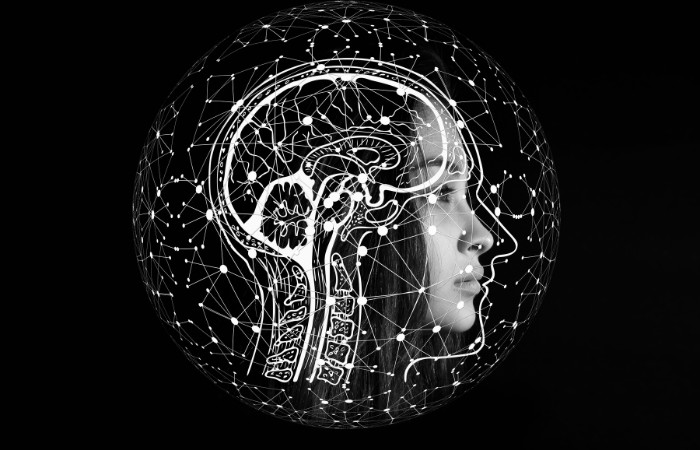How Are Symbols Related To Critical Thinking?

Symbols play a crucial role in our daily lives, and their significance goes beyond just their aesthetic appeal. From the signs we see on the road to the logos we identify with brands, symbols have become an essential aspect of communication in our society.
But did you know that symbols also have a deep connection with critical thinking? In fact, the use of symbols can help improve our ability to analyze information and make sound judgments. Now the question is: How are symbols related to critical thinking?
Basically, symbols are closely related to critical thinking because they can be used to represent abstract concepts, which can help people think more deeply and critically about a particular topic.
In this blog post, we will explore how symbols are related to critical thinking, and how they can be used to enhance our ability to reason and make informed decisions.
What Does Symbol Mean?
Symbols are representations of ideas, concepts, or objects that convey meaning through an agreed-upon system of visual or linguistic cues. They can take many forms, such as letters, numbers, signs, or images.
In critical thinking, symbols are used to represent ideas and arguments. Understanding the meaning behind symbols is essential for analyzing and evaluating the validity and strength of arguments.
Read More: Why Is Critical Thinking So Important For Professional Ethics?
How Are Symbols Related To Critical Thinking?
Symbols, which are representations of ideas or objects, play an important role in critical thinking. They allow individuals to communicate complex concepts, organize information, and understand any context. Here, we will explore how symbols are related to critical thinking.
Symbols and Language Development
Symbols are an essential part of language development in children. Children learn language through a combination of gestures, vocalizations, and symbolic representations.
As children develop their vocabulary, they also develop their ability to use symbols to represent concepts. This is an important step in critical thinking as it allows children to organize and communicate their thoughts effectively.
Symbols and Concept Development
Symbols also play a vital role in concept development. Concepts are ideas or mental representations of objects, events, or relationships. Symbols can be used to represent these concepts, making them more accessible and understandable.
For example, a traffic light is a symbol that represents the concept of traffic regulations. The ability to recognize and use symbols to represent concepts is an important aspect of critical thinking.
Symbols and Context
Symbols can also help individuals understand context. Context refers to the circumstances or environment in which something occurs. Symbols can provide clues about the context of a situation, helping individuals to make sense of it.
For example, a red cross is a symbol that is universally recognized as representing medical aid. If someone sees a red cross on a building, they can infer that it is a medical facility. The ability to understand context is crucial in critical thinking, as it allows individuals to make informed decisions.
Symbols and Decision Making
Symbols are also important in decision-making. And Symbols can be used to represent options or choices, allowing individuals to weigh the pros and cons of different decisions.
For instance, a green checkmark is a symbol that represents approval or agreement, while a red X represents disapproval or disagreement. The ability to use symbols to represent options and choices is an essential aspect of critical thinking.
Read Also: Advantages of Positive Thinking that Improve Your Life
Benefits of Using Symbols in Critical Thinking
Using symbols in critical thinking can facilitate the process and improve decision-making abilities. Symbols can help individuals conceptualize complex ideas and convey them efficiently. Below, we’ve illustrated the benefits of using symbols in critical thinking.
Enhances Communication and Language Development
Symbols are an integral part of language and communication systems. Using symbols in critical thinking can help individuals develop and expand their vocabulary. It can also aid in language development and improve language skills, especially in children. By using symbols, children can learn to connect words with their meanings, which can promote effective communication.
Facilitates Conceptualization and Understanding of Complex Ideas
Symbols can represent complex ideas in a simplified form, making it easier to understand and analyze them. Symbols can help individuals visualize abstract concepts, which can aid in comprehension and retention. For instance, using symbols in math can help students understand complex formulas and equations.
Saves Time and Increases Efficiency
Using symbols in critical thinking can help individuals save time and increase efficiency. Symbols can help individuals quickly identify concepts and ideas, which can expedite the decision-making process. For example, using symbols in data visualization can help individuals quickly identify trends and patterns.
Contextualizes Information
Symbols can help individuals contextualize information, which is crucial in critical thinking. Symbols can provide additional context to ideas and concepts, helping individuals understand how they relate to one another. This can help individuals make informed decisions and avoid misunderstandings.
Facilitates Child Development
Using symbols in critical thinking can aid in child development. Symbols can help children learn concepts and ideas more effectively. They can also facilitate communication between children and adults. For example, using symbols in early childhood education can aid in the development of cognitive and language skills.
Strategies for Effective Use of Symbols in Critical Thinking
Symbols refer to any object or image that represents a concept, idea, or emotion. They can include gestures, written language, and visual icons. This article discusses strategies for using symbols effectively in critical thinking.
Understanding the Role of Symbols
Symbols can convey complex concepts and ideas quickly and easily, making them useful in a variety of contexts. They can also be used to communicate across different languages and cultures.
Consider the Context
The context in which symbols are used can greatly affect their meaning. So, consider the context in which a symbol is being used when interpreting its meaning. For example, the same symbol may have different meanings in different cultures.
Understand the Concept Being Represented
To use symbols effectively in critical thinking, have a clear understanding of the concept being represented. This understanding can help ensure that the symbol accurately conveys the intended meaning.
Use Symbols as a Tool for Representation
Symbols can be used as a tool for representation, allowing complex concepts and ideas to be communicated in a concise and easily understandable way. They can also be used to help organize and structure information.
Consider the Developmental Stage of the Child
When working with children, consider their developmental stage when using symbols. Younger children may not have the same level of symbolic understanding as older children, so it may be necessary to use simpler symbols or gestures to convey a concept.
Provide Opportunities for Symbolic Play
Symbolic play can help children develop their symbolic understanding and critical thinking skills. Providing opportunities for children to engage in symbolic play can help promote their development in these areas.
Read More:
What Part Of The Brain Controls Critical Thinking?
How To Teach Critical Thinking In The Workplace?
Final Thoughts
It may be clear how are symbols related to critical thinking after reading the discussion above. In general, symbols are closely related to critical thinking. Symbols can convey complex ideas and emotions in a concise, visual form, allowing us to identify and interpret them in a way that words cannot.
This ability to break down complex ideas into easily recognizable forms makes symbols an invaluable tool in critical thinking. Symbols can allow us to analyze and interpret information quickly and accurately, as well as to make connections between seemingly unrelated concepts.



